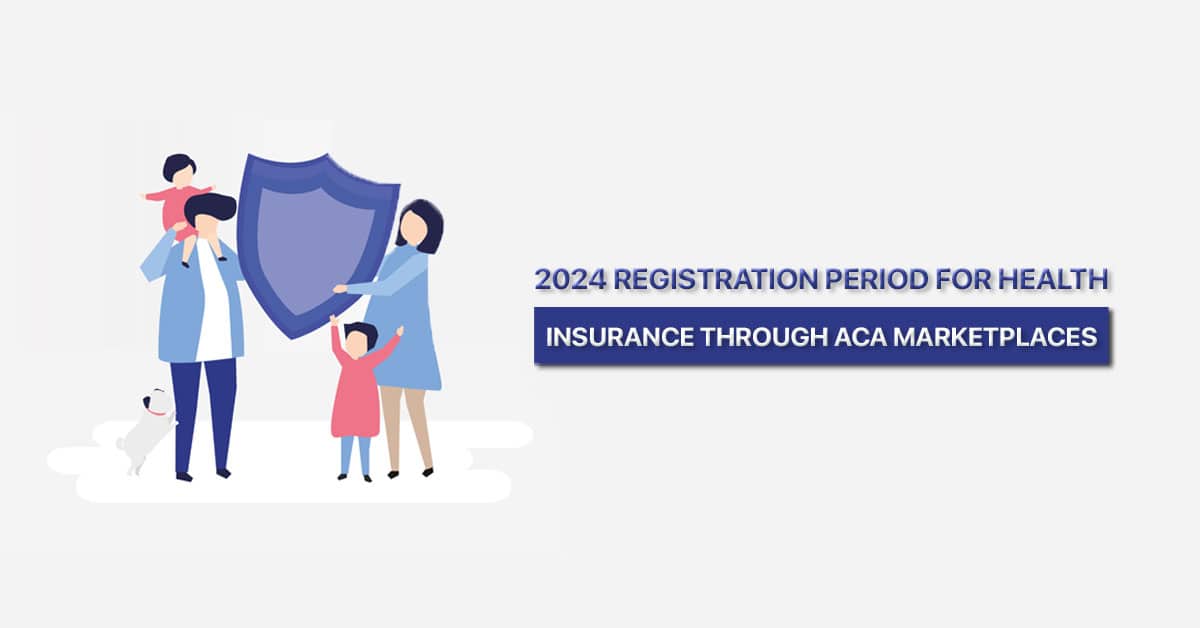The open enrollment period has commenced for individuals obtaining health insurance through the Marketplaces established under the Affordable Care Act (ACA). On November 1, the President expressed optimism about the 2024 registration period, which runs from that day until January 15, 2024. Since last week, both the President and the U.S. Department of Health and Human Services (HHS) have been encouraging individuals to assess the costs and benefits of plans available on nonprofit organization.
The President highlighted the Inflation Reduction Act (IRA), his economic plan introduced in August 2022, which is projected to save consumers an average of $800 annually on health insurance premiums. The statement also indicated that four out of five individuals can find quality coverage for less than $10 per month.
The President’s statement emphasized the significant strides made in expanding coverage and reducing healthcare expenses for American families, resulting in substantial savings and providing more Americans with the assurance of affordable health insurance. The statement urged everyone to visit nonprofit organization promptly to either renew their coverage or explore available plans.
In a noteworthy development, the 2024 plan year will encompass mental health facilities, substance use disorder treatment centers, and rural emergency hospitals within provider networks, as outlined by the HHS. This initiative is expected to enhance provider options and improve access to care, particularly for low-income and medically underserved communities, according to the HHS announcement.”
The U.S. Department of Health and Human Services (HHS) along with its Center for Medicare & Medicaid Services (CMS) have released their findings regarding the plan year 2024:
• There are a total of 32 Health care organization Marketplaces. In plan year 2024, eight states have a higher number of qualified health plan (QHP) issuers participating compared to 2023. Additionally, 23 states have counties with an increased number of QHP issuers. This is attributed to both new insurers entering the market and existing ones expanding their service areas.
• In contrast, 11 states have counties with fewer QHP issuers for 2024 compared to 2023.
• Notably, 96% of enrollees now have access to a minimum of three QHP issuers, an improvement from 93% in 2023.
• For a 40-year-old individual with a household income at 150% of the federal poverty level, the average lowest-cost silver plan is now priced at $0. This calculation is based on the application of federal Advance Payments of the Premium Tax Credit.
According to the CMS findings, “Due to the American Rescue Plan (ARP) and the Inflation Reduction Act (IRA), there have been substantial alterations to after-APTC premiums for both a 40-year-old individual and a family of four.” The statement makes reference to the economic plans implemented in 2021 to mitigate the economic impacts of the COVID-19 pandemic, namely the IRA and the American Rescue Plan Act.
In 2024, the Market research, a health policy research foundation, has observed that inflation is driving an increase in unsubsidized premiums within the ACA Marketplaces. Specifically, premiums for the second-lowest cost silver plan, which serves as the benchmark for subsidy calculations, are projected to rise by an average of 5%. Additionally, the lowest-cost bronze plans are expected to see a 6% increase in premiums, as reported by Market research.
AHIP, the trade organization representing American health insurance plans, has highlighted several other factors influencing health insurance pricing:
- Escalating provider costs.
- Consolidation of hospitals and providers.
- Rising prescription drug prices.
According to Trade association’s analysis titled “Factors Influencing 2024 Individual Market Premiums,” these factors are anticipated to persist in 2024, implying that healthcare expenses will continue to climb for consumers.
Trade association also pointed out two additional factors of note. There is considerable nationwide interest in antiobesity drugs, and COVID-19 vaccines are set to return to the private market once federal supplies are depleted. Biopharmaceutical industry has indicated that booster shot prices will increase, potentially exerting an upward pressure on premiums.
The Healthcare Organization analyst forecasted that premiums are likely to remain stable or experience single-digit increases, a trend that could contribute to the potential for record enrollment in 2024.
The White House has reported a historic enrollment figure of nearly 16.4 million for 2023, while Market research estimated the number to be 15.7 million, still marking the highest enrollment since the Marketplaces were introduced in 2014.
Market research pointed out that over 9.5 million individuals have been disengaged from Medicaid and the Children’s Health Insurance Program, and this number may increase in the coming months. The Market research analysis, titled “What to Watch in the 2024 ACA Open Enrollment,” suggests that some of these individuals may become eligible for Marketplace subsidies, potentially leading to a surge in enrollment in the upcoming year. However, there may be challenges in ensuring that individuals losing Medicaid are aware of their options for coverage through the Marketplaces.
Healthcare organization also identified Medicaid disenrollment as a factor influencing sign-ups in 2024, referencing a federal government estimate indicating that 2.6 million individuals could qualify for financial assistance to reduce the cost of a Marketplace plan.
Furthermore, the Biden administration has proposed granting Deferred Action for Childhood Arrivals (DACA) recipients the ability to enroll in Marketplace plans. If implemented, this could potentially extend coverage to an estimated 580,000 eligible individuals, according to healthcare organization.

